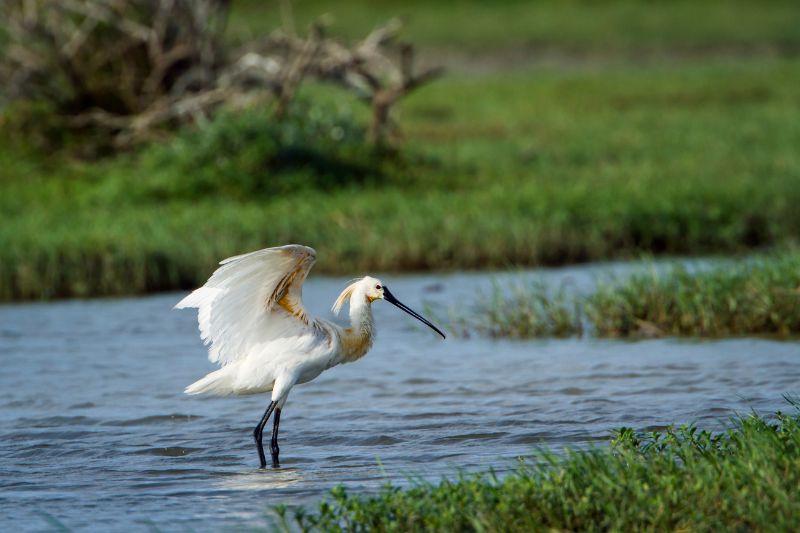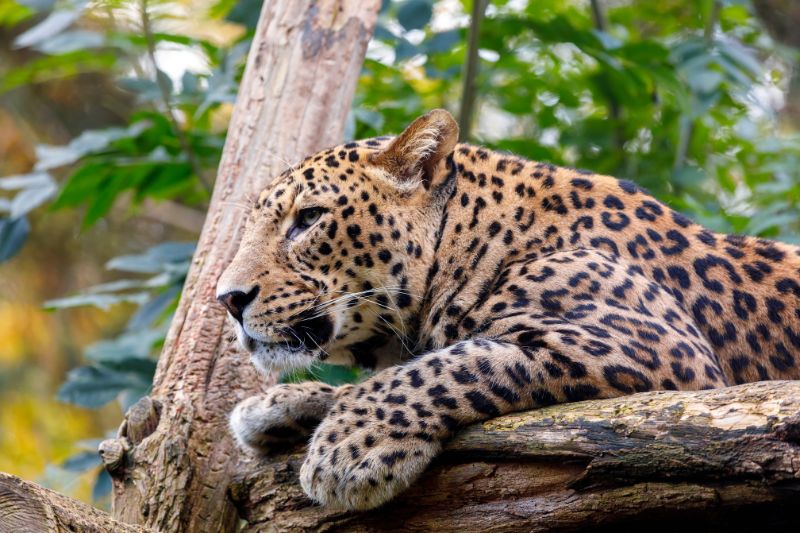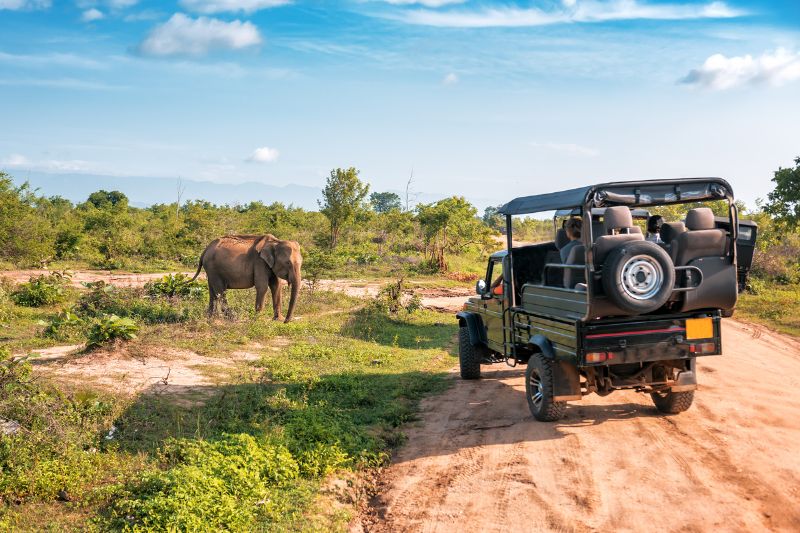Welcome to Sri Lanka, a tropical paradise known for its rich culture, stunning landscapes, and incredible wildlife. If you’re dreaming of a trip to this beautiful country, a safari should be at the top of your must-do list. This Sri Lanka safari planning guide will help you do just that:
A safari in Sri Lanka is a truly unique experience, as the country’s national parks and reserves offer a chance to witness native creatures up close and personal, in their natural habitats. From the lush jungles of Yala National Park to the rolling hills of Udawalawe National Park, there are a number of options for safari-goers to choose from.
However, planning a safari in Sri Lanka can be daunting, especially if it’s your first time. With so many national parks and tour operators to choose from, it can be hard to know where to start. That’s why we’ve put together this guide to help you plan the perfect Sri Lanka safari, from choosing which national parks and wildlife reserves to explore and where to stay, to selecting the right safari company and top tips for your adventure.
So sit back, relax, and let us guide you through the process of planning a memorable safari in Sri Lanka.
Where to go on a Sri Lankan safari
Sri Lanka is home to a variety of national parks and wildlife reserves, each offering a unique safari experience. Here is a guide to some of the top places to go on safari in Sri Lanka:
- Yala National Park: Located in the southeast of the country, Yala National Park is the most popular destination for wildlife enthusiasts in Sri Lanka. It is home to a diverse range of animals, including leopards, elephants, sloth bears, and crocodiles. The park also boasts a large bird population, making it a great destination for birdwatching.
- Wilpattu National Park: Located in the northwest of the country, Wilpattu National Park is the largest national park in Sri Lanka. The park is home to a variety of animals, including leopards, elephants, sloth bears, and water buffalo. It is also known for its beautiful lakes and wetlands, which attract a range of bird species.
- Udawalawe National Park: Located in the south-central part of the country, Udawalawe National Park is home to a large population of elephants. The park also has a variety of other animals, including buffalo, crocodiles, and monkeys.
- Minneriya National Park: Located in the north-central part of the country, Minneriya National Park is famous for its annual elephant gathering. During the dry season, hundreds of elephants gather around the park’s central lake to drink and bathe.
- Bundala National Park: Located in the southeast of the country, Bundala National Park is a wetland sanctuary that is home to a variety of bird species. The park is also home to a number of animals, including elephants, crocodiles, and turtles.

When to go on safari in Sri Lanka
The best time to go on safari in Sri Lanka depends on the specific park or reserve you plan to visit. Generally, Sri Lanka has two main monsoon seasons, with the southwest monsoon occurring from May to September and the northeast monsoon occurring from October to January. The dry season, from December to March, is generally considered the best time to go on safari in Sri Lanka, as the weather is dry and pleasant, and animals are more likely to congregate around water sources.
Yala National Park, which is home to the highest concentration of leopards in the world, is best visited from February to July when the park is less crowded and animal sightings are more frequent. On the other hand, Wilpattu National Park is best visited from February to October, when the park’s water sources are at their lowest, making it easier to spot animals around the remaining waterholes.
If you’re interested in seeing the annual elephant gathering at Minneriya National Park, you should plan your visit between August and September, when hundreds of elephants gather around the park’s central lake.
It’s important to note that some parks, such as Bundala National Park, are better visited during the monsoon season, as the park’s wetlands and lagoons are at their most vibrant during this time, attracting a variety of bird species.
In general, it’s recommended to avoid visiting Sri Lanka’s national parks during the peak monsoon season, from October to January, as heavy rains can make it difficult to explore the parks and spot wildlife. However, with careful planning and consideration of the weather patterns, any time of year can offer a unique and unforgettable safari experience in Sri Lanka.
Safari Companies in Sri Lanka
When planning a safari in Sri Lanka, it’s important to choose a reputable safari company that prioritizes animal welfare and conservation efforts. Here are a few of the best safari companies in Sri Lanka:
- Leopard Safaris: Leopard Safaris is a highly recommended safari company that offers customized tours of Yala National Park. They specialize in leopard spotting, and their guides are highly trained to identify and track these elusive animals.
- Jetwing Eco Holidays: Jetwing Eco Holidays is a sustainable tourism company that offers a range of safari packages to various national parks in Sri Lanka. Their tours are designed to promote responsible tourism and support local communities.
- Mahoora Tented Safari Camps: Mahoora Tented Safari Camps offers luxury camping experiences in various national parks in Sri Lanka. Their camps are eco-friendly and designed to blend seamlessly into the natural surroundings.
- Sri Lanka Eco Tours: Sri Lanka Eco Tours is a sustainable tourism company that offers a range of safari packages to various national parks in Sri Lanka. Their guides are highly knowledgeable about Sri Lanka’s flora and fauna, and they prioritize conservation efforts in their tours.
- Walkers Tours: Walkers Tours is a well-established tourism company in Sri Lanka that offers a range of safari packages to various national parks in the country. They prioritize safety and comfort in their tours, and their guides are highly trained and knowledgeable.
When choosing a safari company in Sri Lanka, it’s important to do your research and read reviews from previous customers. Look for companies that prioritize animal welfare, conservation efforts, and responsible tourism practices. With the right safari company, you’re sure to have an unforgettable and ethical safari experience in Sri Lanka.

Packing Essentials for a Sri Lanka Safari
If you’re planning a safari trip to Sri Lanka, here are some essential items you should consider packing:
- Lightweight, breathable clothing that covers your arms and legs to protect against mosquitoes and other insects.
- Comfortable walking shoes or hiking boots that provide good traction on uneven terrain.
- A hat and sunglasses to protect against the sun.
- A lightweight rain jacket or poncho for unexpected rain showers.
- A good camera or binoculars to enhance your safari experience.
- A portable charger to keep your electronic devices charged.
- Insect repellent and sunscreen to protect against bites and sunburn.
- A reusable water bottle to stay hydrated throughout the day.
- Snacks or energy bars to keep you fuelled throughout the safari.
- A first aid kit that includes essentials like bandages, antiseptic cream and pain relievers.
- Cash or a credit card for park entrance fees and souvenirs.
By packing these essentials, you’ll be well-prepared for a safe and enjoyable safari experience in Sri Lanka.

Top Tips for a Sri Lankan Safari
If you’re planning a safari in Sri Lanka, here are some top tips to make the most of your experience:
- Choose the right time of year: The best time to go on safari in Sri Lanka depends on the specific park or reserve you plan to visit. Research the weather and animal sightings to help you plan your trip.
- Choose a reputable safari company: Look for a safari company that prioritizes animal welfare and conservation efforts. Read reviews and ask for recommendations from fellow travellers to make an informed decision.
- Listen to your guide: Your safari guide is an expert on the park and its wildlife. Listen carefully to their instructions and follow their lead to stay safe and maximize your chances of spotting animals.
- Respect the animals: Keep a safe distance from animals and avoid disturbing them. Never feed them or try to interact with them. Follow park regulations and respect the animals’ natural habitat.
- Be patient: Wildlife sightings are not guaranteed on a safari. Be patient and enjoy the experience of being in nature. Remember that the journey is often just as rewarding as the destination.
- Bring the right gear: Pack lightweight, breathable clothing that covers your arms and legs to protect against insects. Bring a good camera or binoculars to enhance your experience. Carry sunscreen, insect repellent, and a reusable water bottle to stay comfortable throughout the day.
- Take breaks: Safaris can be tiring, so take breaks as needed to rest and recharge. Listen to your body and don’t push yourself too hard.
By following these tips, you’ll be well-prepared for a safe and enjoyable safari experience in Sri Lanka. Enjoy!

